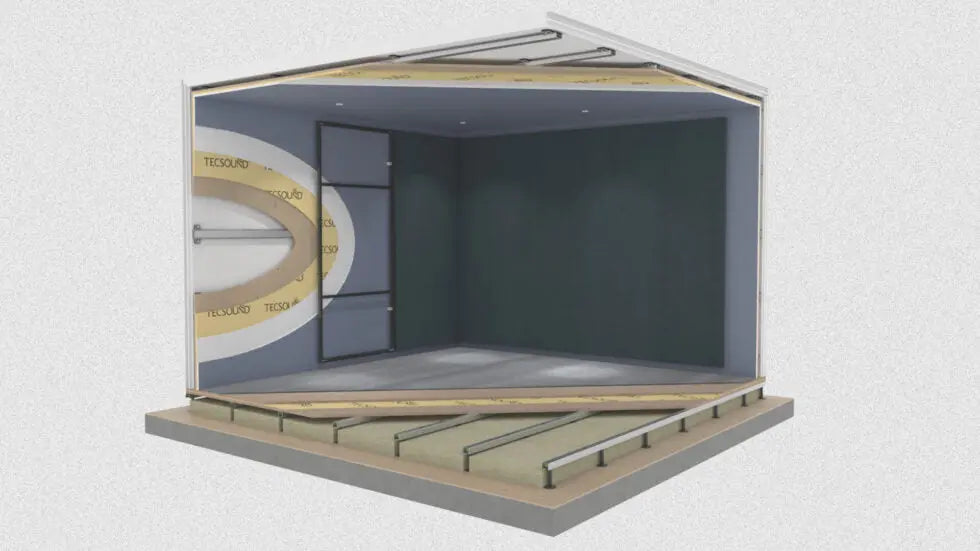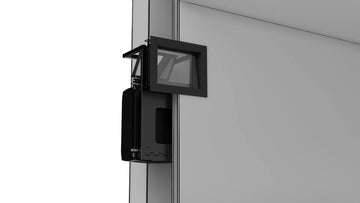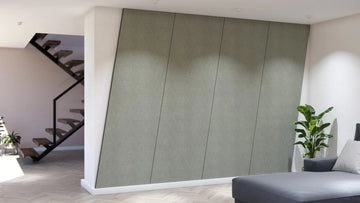
MAID Framework - Room Sound Isolation
Sound is what separates an authentic cinema experience from simply watching TV. A dedicated and fully engineered room with effortless dynamics, pumping bass, and fully immersive surround sound is a visceral, emotional experience. These qualities which make the experience are also the biggest challenge in cinema design – delivering the experience only to those in the cinema and nowhere else.
There are two distinct elements to optimising cinema acoustics to ensure maximum performance, regardless of the speaker system choice: Acoustic Treatment and Sound Isolation. The improvements provided by each system can be complementary, but by taking a dedicated approach to each, we can achieve the best overall results. In this article, we will focus only on Sound Isolation.

Sound Isolation relates to constructing the acoustic shell to maximise the attenuation between the cinema and surrounding spaces. We can tackle sound isolation by applying MAID – Mass, Air permeability, Isolation and Damping.
In Sound Isolation, dispelling one myth at the earliest stage is essential. Attenuating the level of sound transfer to a suitable level is our goal – completely preventing sound leakage from a high-performance cinema is impossible, making the choice of location very important. This difficulty is most apparent in bass notes, which have a long wavelength that is extremely difficult to contain. Luckily for us, human hearing is much less sensitive to low-frequency sounds, and this is reflected in the standards used to describe the spectra of noise and in the assessment of isolation performance. It is convenient to use single numbers to explain performance, but in sound, that can only ever be a starting point to the overall system design. Understanding noise and isolation ratings is an article all of its own, however!

The MAID framework gives us the 4 elements that we can address when designing the optimal sound isolation solution. Let’s look at these in turn.
Mass is simply the weight of the sound isolation structure. As the mass doubles, the transmission loss improves by 6dB. Intuitively, a massive and dense structure will block more sound than a lightweight one, but this also implies that the structure will use considerable available floor space. Therefore, it is tempting to use a very dense material such as metal panels; however, the rigidity of these materials makes them a poor choice. The rigid material tends to vibrate more, releasing much of the sound energy back into the space.
Air permeability is a critical factor. Just as water will find the tiniest crack and seep through it, so will sound energy. Any gaps in the sound isolation shell will significantly weaken the performance, and only real attention to detail during construction can ensure that they are blocked. Obvious problems come from doors and windows, but hidden flanking paths, such as around ductwork or cable penetrations, can be more challenging. These tiny hidden flanking paths can cost as much as a 10dB decrease in transmission loss, so they play a massive role in the final result.
Isolation is an often overlooked factor in cinema sound isolation. When you look at that giant subwoofer that will create a 20Hz note at 115dB, it should be no surprise that the resulting sound wave has tremendous energy. When that energy hits the walls, floor and ceiling, that energy must be converted to some other form – typically motion and heat – to be removed inaudibly. That same energy, however, can easily be transferred into the structure, at which point it can travel much further than when in the air. You can prevent this transfer by isolating the speakers so they do not couple to anything in the space and by isolating the walls, floor and ceiling from the structure. It is much easier to contain the sound in the air than if the sound couples with the structure.
Damping is our final element in the sound isolation framework. Heavy, rigid objects like metal panels quickly release energy directing the sound back towards the origin and outwards towards the rest of the vessel. The use of damping materials on these objects significantly reduces that tendency, resulting in a similar increase in transmission loss. Layering materials of varying rigidity can achieve even higher performance. Using a limp mass material between two rigid surfaces significantly improves the final result.
With the correct approach, the isolation build-up will reduce noise leakage to below the ambient noise level in the rest of the property. The MAID framework by SRND Group clarifies how to optimise construction and deliver the best possible result.


